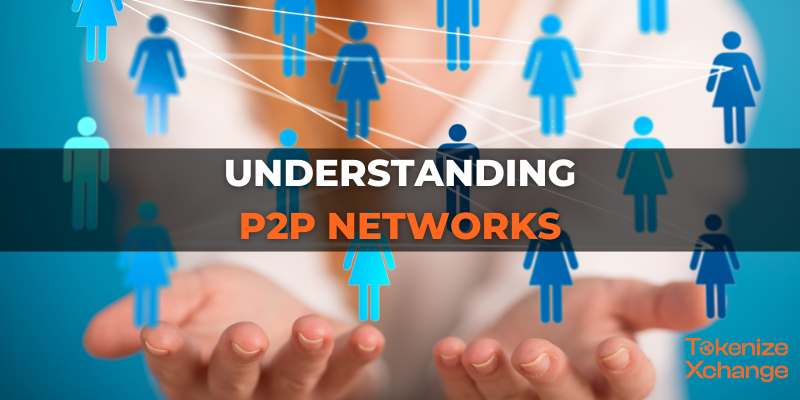
In the realm of blockchain and cryptocurrencies, you’ve likely encountered the term “P2P Network.” P2P is short for “peer-to-peer,” and it’s a concept that’s at the heart of how these technologies work.
P2P networks form a computer network style where devices link directly to exchange information and resources, bypassing the requirement for a central server. In these networks, each device takes on the role of both sender and receiver, facilitating seamless sharing of files, data, or services. This decentralized method fosters teamwork and eradicates the need for go-betweens, resembling friends digitally trading items directly without any middleman involved.
How P2P Networks Work on Blockchain
Peer-to-peer (P2P) networks operate on a principle rooted in resource sharing. Here’s a simplified breakdown of their mechanics:
1. Bootstrapping: As a new node joins the network, it must discover and connect with other nodes. This process, known as bootstrapping, involves linking to a predetermined set of nodes (seed nodes) to gain knowledge about other peers within the network.
2. Node Discovery: Through initial connections and subsequent interactions, nodes progressively compile a roster of fellow participating nodes. This accumulation of nodes establishes the network’s underlying structure or topology.
3. Routing and Data Exchange: For specific data or resource retrieval, nodes utilize routing algorithms to efficiently locate the desired information. The data exchange occurs directly between nodes, bypassing the need for a centralized server.
4. Data Replication and Distribution: P2P networks allow data to be replicated across multiple nodes, bolstering data accessibility and fortifying the network against faults. If one node becomes unavailable, other nodes can step in to provide the required information.
P2P Networks’ Integration into Blockchain Technology
Blockchain technology, celebrated for its decentralized and tamper-resistant nature, strategically employs P2P networks to realize its core objectives. Here is how P2P networks intertwine with blockchain technology:
1. Decentralization: P2P networks provide the structural foundation for blockchain’s decentralized architecture. Every participant (node) in the network upholds a copy of the complete blockchain ledger. Consequently, the need for a central authority to validate transactions is obviated, and consensus is harmonized among participating nodes.
2. Data Synchronization: Given that each node retains a copy of the blockchain, P2P networks enable seamless data synchronization throughout the network. Whenever a new block is appended, it is propagated across the network, guaranteeing that all nodes possess an updated version of the ledger.
3. Consensus Mechanisms: Commonly, blockchain networks integrate consensus mechanisms like Proof of Work (PoW) or Proof of Stake (PoS) to ratify the blockchain’s state. P2P networks facilitate the distribution of proposed blocks and the validation of these blocks by other nodes within the network.
4. Security and Immutability: The security and immutability of blockchain data are fortified by P2P networks. Transactions undergo validation and are stored across numerous nodes, making it immensely challenging for malicious entities to tamper with the data without achieving consensus.
5. Resilience: P2P networks amplify the robustness of blockchain networks. Should some nodes experience downtime or compromise, the network persists, as other nodes retain the indispensable data.